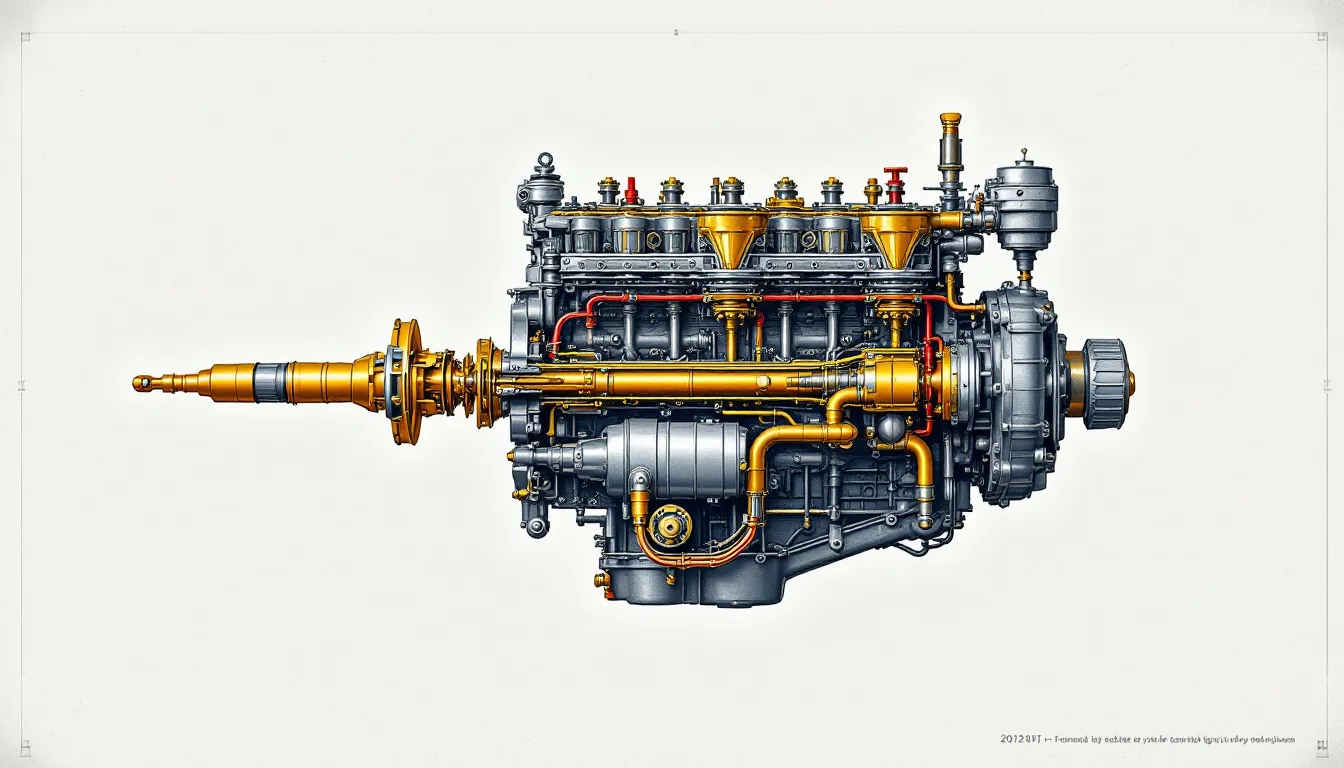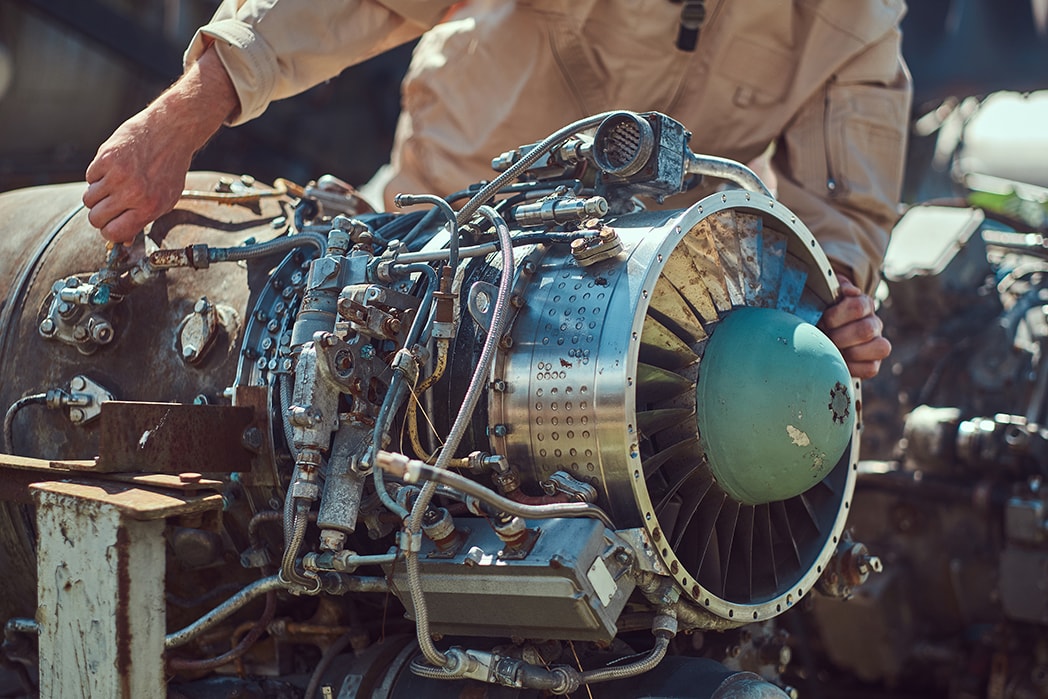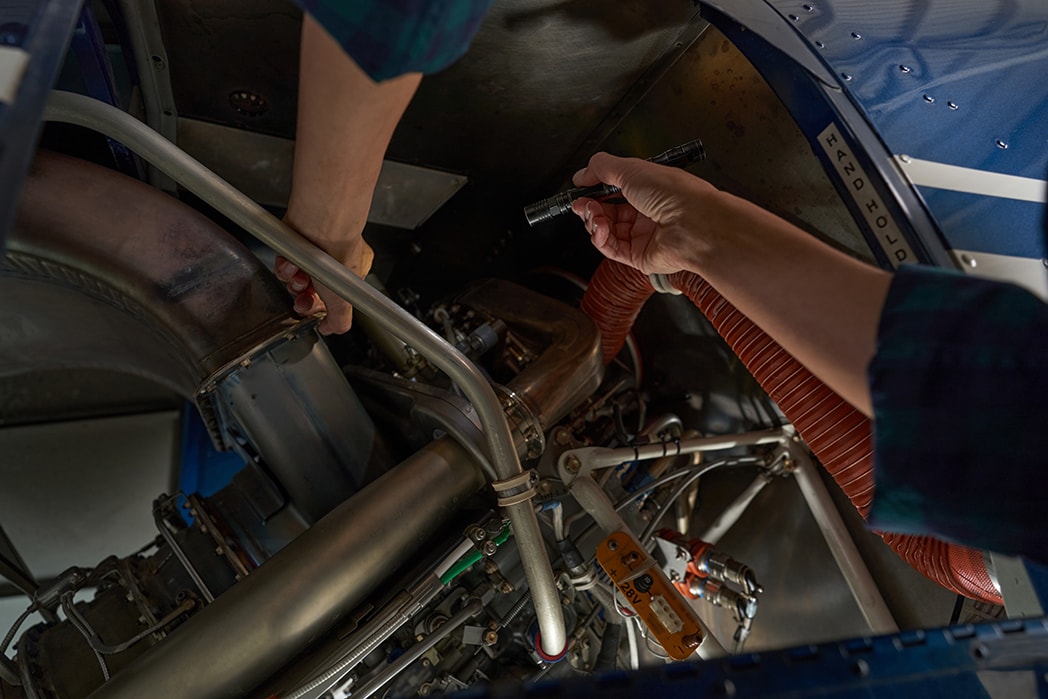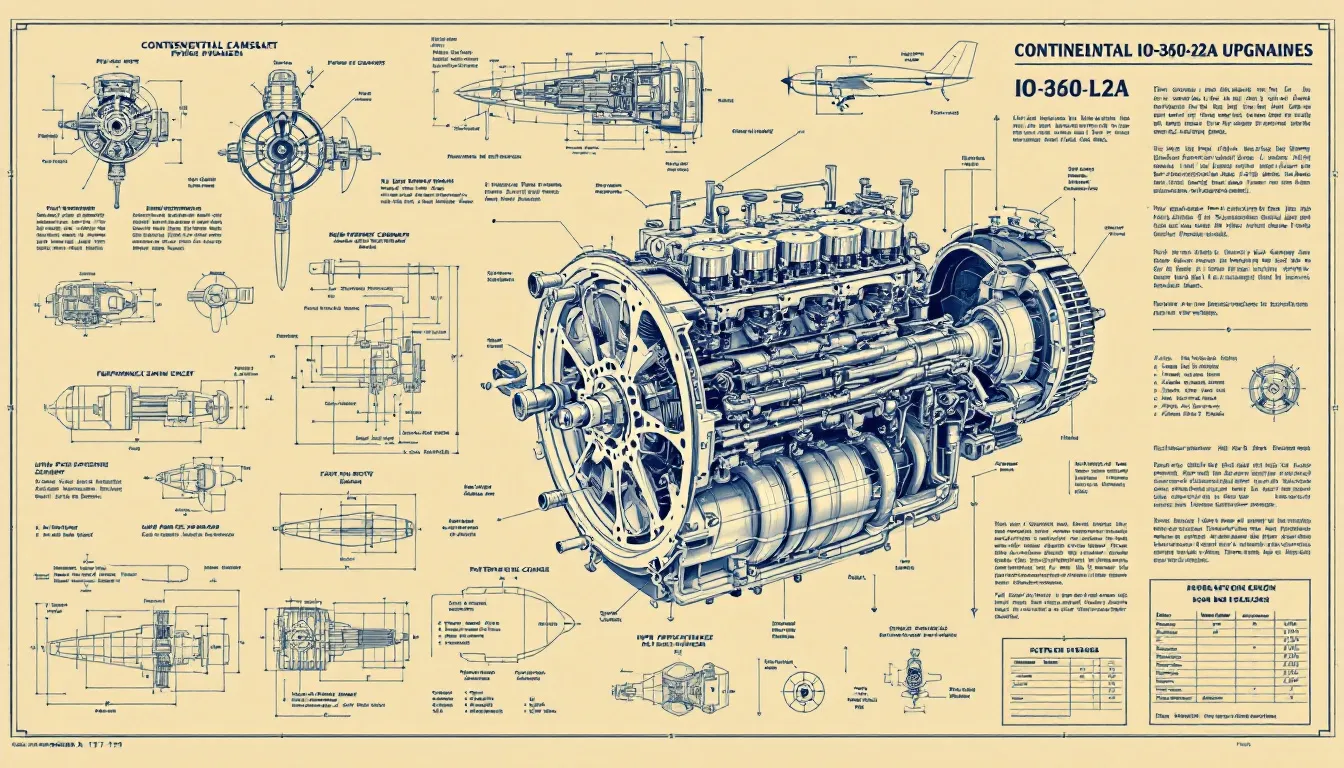The Cessna 172 Engine: Specs and Performance
Mar 28, 2025
Searching for information on the Cessna 172 engine? This guide covers engine specs, different variants, performance metrics, and reliability factors that make it a top choice for pilots.
Overview of the Cessna 172 Engine
The Cessna 172 is a work of aviation art that has been in production since 1956. A single engine aircraft known for its durability and reliability, that’s why pilots and flight schools love it. The engine variants within the Cessna 172 line are the key to its success and longevity.
For example, the Cessna 172S features a Lycoming IO-360-L2A engine that produces 180 horsepower, providing ample power for takeoffs and climbs. Meanwhile, the Cessna 172R uses a 160-horsepower engine, demonstrating the variety of power options within the 172 family.
These engines are designed for power but also for reliability and ease of maintenance for a smooth and predictable flight.
Before vs. After Description Comparison
Before
The Cessna 172 is a single engine aircraft known for its reliability and ease of use. It has a high wing design for excellent visibility for pilots and passengers. The aircraft has many instruments to enhance navigation and safety.
And the Cessna 172 has a big cabin that can seat four people comfortably, great for training and recreational flying.
After
The Cessna 172 is a popular single-engine Cessna aircraft known for its reliability and ease of use. It features:
-
A high-wing design, which provides excellent visibility for pilots and passengers
-
A variety of instruments that enhance navigation and safety
-
A spacious cabin that can comfortably seat four people, manufactured by the Cessna aircraft company.
This makes it a great choice for both training and recreational flying.
Horizontally Opposed Aircraft Engine

The opposed engine is the foundation of the Cessna 172. Opposed engines are known for being compact and efficient with cylinders extending out from a central crankcase for smoother operation. This design helps aerodynamics and overall performance and fuel efficiency.
An opposed engine’s power to weight is key to the Cessna 172’s performance and handling. The lighter weight helps with handling and responsiveness in flight. The engine’s balance and reduced vibration makes for a smoother ride for the pilot.
The horizontally opposed engine also excels in converting more fuel into mechanical energy compared to traditional straight engines.
This efficiency is crucial for the Cessna 172, as it allows for better fuel economy and longer flight times. The compact design of the engine further improves the aerodynamic efficiency of the aircraft, making the Cessna 172 one of the most successful aircraft in its class.
At Flight Nerd Air Force, we’re your go-to source for mastering aviation. Whether you're exploring the Cessna 172's performance, comparing it to aircraft like the Piper Archer, or learning about fuel efficiency, our expert community is here to guide you.
Join us for in-depth insights, training resources, and tips from pilots with over 20 years of experience. Start your flight journey today with Flight Nerd Air Force
Lycoming IO-360-L2A
The Lycoming IO-360-L2A is a beast of an engine that powers the Cessna 172, particularly the 172R. This horizontal 4 cylinder engine makes 160HP at 2400 RPM, enough to get the job done. Smooth and reliable is what this engine is all about, for training and personal use.
With a cruise speed of 115 knots, the Lycoming IO-360-L2A gets the Cessna 172 to go far. This optimal cruise speed helps maximize the aircraft's efficiency, allowing it to achieve a fuel burn of 10 gph under optimal conditions.
This engine gives you the power and efficiency you need for whatever you want to do with the 172. It’s a great trainer and versatile plane for many missions.
The horizontal design of the Lycoming IO-360-L2A makes it compact, balanced and vibration free. This engine is the perfect blend of power, efficiency and reliability that has made the Cessna 172 a mainstay in the industry.
Diesel Engines in the Cessna 172

The introduction of diesels in the Cessna 172 is a big deal. The current Cessna 172 JT-A has a 155-hp Continental CD-155 turbodiesel engine which is way better than any previous diesel. This engine has better climb performance, gets into a strong positive climb and a lot better than the standard models.
The JT-A’s turbodiesel engine runs continuous max power in any flight condition. It also gets to 18,000 feet maximum altitude, much higher than the standard models. That makes the JT-A a great option for pilots who want more performance and efficiency.
The JT-A’s takeoff roll is 844 feet, over 100 feet shorter than the Lycoming powered version. The range of the Cessna 172 JT-A is 963 miles, way more than the 640 nm of the gas powered models.
The CD-155 engine has a single lever power control system, makes engine management easy for the pilot to operate and fly the plane.
Air Cooled Engine

The Cessna 172’s air cooled engine is pure engineering magic. It’s efficient heat dissipation design reduces the risk of engine overheating in flight.
The cooling fins and prop slipstream work together to keep the engine at the optimal operating temperature so it runs smoothly and reliable. This is especially important in general aviation where reliability and ease of maintenance is key.
Air cooled engines are generally cheaper to maintain than liquid cooled engines so it’s a big plus for the Cessna 172 and it’s owners. That’s one of the reasons the Cessna 172 remains popular among flight schools and private owners. The air cooled engine also means better fuel economy in all flight conditions.
The air cooled engine gives you reliable power, easy maintenance and cost effectiveness. You can plan your flight and fuel more efficiently knowing your engine will run reliably throughout your journey.
Engine Performance Metrics
The Cessna 172’s performance specs are impressive. The service ceiling is 14,000 feet, the Cessna 172S is 13,500 feet. That’s high enough for most general aviation flying and allows you to operate in any airspace.
The Cessna 172’s max climb is 730 feet per minute, the Cessna 172N is 770. That’s important for safe and efficient flying in varied terrain and weather. A 180 horsepower engine upgrade will boost your Cessna 172’s cruise and climb.
The stall speed is 48 knots. That’s important for landing and takeoff. A constant speed prop will optimize performance by adjusting blade pitch for different flight conditions, so the engine runs best in all phases of flight.
The maximum engine rpm for the Lycoming IO-360-L2A is 2,400 RPM, which ensures optimal power output and efficiency during flight. These numbers are why the Cessna 172 is a trusted aircraft.
Within the Cessna 172 cockpit, pilots can easily monitor these metrics, ensuring smooth and efficient operation of the aircraft.
Fuel Capacity and Efficiency

Fuel capacity and economy are critical to the Cessna 172’s success. The Cessna 172N has a 43 gallon fuel capacity which allows for short and long range flights.
The maximum takeoff weight of the Cessna 172 is 2,550 pounds, so it can carry a lot of payload and still be very efficient. When operating with a full fuel payload, the aircraft can achieve optimal range and performance while still carrying a significant amount of cargo or passengers.
In terms of fuel economy, the Cessna 172 JT-A is at least 25% better than the previous engines, such as the Lycoming IO-360 engine. This is due in part to the air-cooled engine’s cooling system, which maintains power and fuel efficiency. The Cessna 172 burns 7-10 gallons an hour depending on conditions.
Jet-A fuel which is generally cheaper and more available than 100LL aviation fuel makes the Cessna 172 JT-A more cost effective.
The usable load on the Cessna 172 can vary greatly depending on fuel capacity and model, so operators can optimize their payload and economy. This also plays an important role in the Cessna 172 landing, as fuel levels and payload affect the landing distance and overall approach strategy.
Maintenance and Reliability

Maintenance and reliability of the Cessna 172 is one of the reasons it’s so popular and widely used. Horizontally opposed engines are more complex due to the dual cylinder head design which means more maintenance.
But the simplicity of the design means easier maintenance and lower costs which makes the Cessna 172 the go to for flight training and personal use.
Routine maintenance for the Cessna 172 is pre-flight checks, 100 hour checks for commercial training and annual inspections.
Common maintenance issues are corrosion of the aluminum airframe and wear on engine components which requires regular inspections. The cost of an annual inspection is around $1,000 to $2,000 depending on the age and condition of the aircraft.
Engine overhauls are required every 2,000 hours, around $20,000 to $30,000 which is a big but necessary investment to ensure continued reliability.
The horizontally opposed engine design makes it easy to access to engine components for service and inspection, minimizes downtime and keeps the aircraft operational.
Engine Upgrades and Modifications

Upgrades and mods make the Cessna 172 even better. More powerful and efficient engines can improve performance and range. These mods turn the Cessna 172 into an even more capable and versatile machine.
One popular mod is the constant speed propeller, which allows you to adjust blade pitch in flight. This mod improves efficiency, performance, and fuel economy. It’s a great mod for many operators, especially with improved low speed handling, which enhances the aircraft's responsiveness and stability during slow flight and approach maneuvers.
For improved pilot comfort, some Cessna 172s come with vertical and reclining adjustments for the seats. These adjustments provide greater flexibility for pilots to find the most comfortable position, reducing fatigue on long flights and ensuring better focus during training or cross-country missions.
Common avionics upgrades are advanced nav systems, autopilot, and communication equipment. These upgrades not only make the aircraft safer and more efficient, but also contribute to improved pilot readability compared to older models, ensuring that pilots can more easily interpret flight data and make quick decisions.
With the addition of these sophisticated features, the Cessna 172 is becoming more like a complex aircraft, offering capabilities that rival more advanced models in general aviation.
These features make the aircraft more appealing to pilots and operators. With these upgrades, the Cessna 172 can keep up with the changing needs of the aviation community.
Summary
In short the Cessna 172’s engine is the key to its success and longevity in the industry. From horizontally opposed to diesel engines the Cessna 172 has evolved to meet the needs of pilots and owners.
The air cooled engine, performance numbers, fuel capacity and maintenance considerations all add up to its reputation as a reliable and efficient aircraft.
Knowing the Cessna 172 engine will give you all the answers why it’s the top choice for training and personal flying. As tech advances the Cessna 172 will continue to evolve and remain the backbone of general aviation.
Frequently Asked Questions
What is the horsepower of the engine in the Cessna 172S?
The Cessna 172S is equipped with an engine that produces 180 horsepower.
What type of engine does the Cessna 172 JT-A use?
The Cessna 172 JT-A is equipped with a 155-hp Continental CD-155 turbodiesel engine, providing efficient performance. This engine choice enhances the aircraft's capabilities and fuel efficiency.
What is the fuel capacity of the Cessna 172N model?
The Cessna 172N model has a fuel capacity of 43 gallons.
How often are engine overhauls required for the Cessna 172?
Engine overhauls for the Cessna 172 are typically required every 2,000 flight hours. Regular maintenance is essential to ensure the longevity and safety of the aircraft.
What is the maximum operational altitude of the Cessna 172 JT-A?
The maximum operational altitude of the Cessna 172 JT-A is 18,000 feet, ensuring versatility in flight operations.
